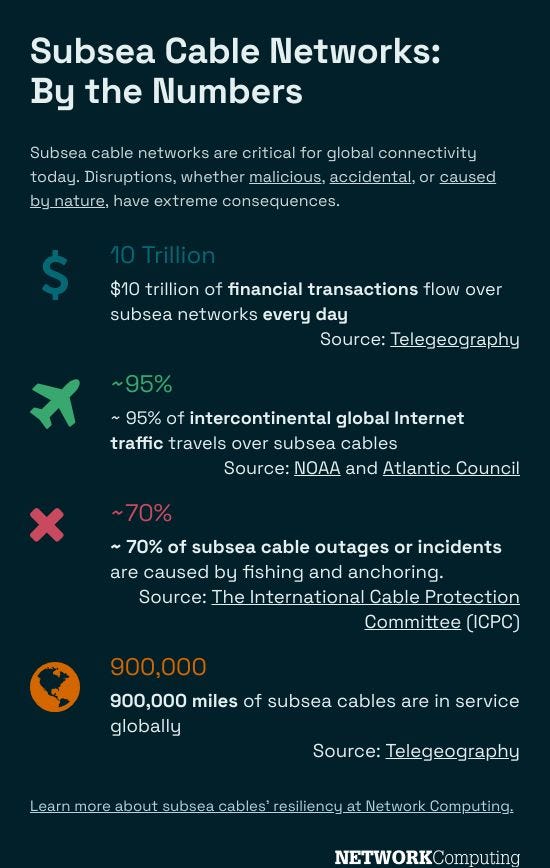FCC Launches First Comprehensive Subsea Cable Rules Review Since 2001FCC Launches First Comprehensive Subsea Cable Rules Review Since 2001
The effort aims to streamline subsea cable deployment rules while ensuring the security, resilience, and protection of this critical infrastructure.
November 26, 2024

With rising demand for new and more advanced subsea cables, the FCC is seeking input to update rules, processes, and practices for current and future submarine cables.
Specifically, the FCC seeks to improve and streamline rules for the more efficient deployment of submarine cables while ensuring the security, resilience, and protection of this critical infrastructure.
The current rules and regulations have not been the subject of such a comprehensive review since 2001, according to the FCC. “Since then, the technology, economics, and national security environment surrounding these systems have greatly changed,” the agency said.
The updated and new rules and processes would help service providers make the most of the subsea cables needed to replace much older lines from decades ago.
Subsea Cable Landing Station Risks Explored
The comprehensive undertaking will feature a review of submarine Cable Landing license rules and procedures to assess evolving national security, law enforcement, foreign policy, and trade policy risks. The FCC - and efforts by foreign nations - seek to use modern technology to better secure and protect cable landing stations (CLS), where subsea cables come ashore to connect with terrestrial cables and an array of equipment.
CLS and manholes between the termination stations and the subsea cables are increasingly seen as security threats that can and have been damaged and tampered with by criminals and vandals. This approach to damaging subsea systems is seen as easier than cutting the cables underwater.
Increasing attention in the U.S. and around the globe to fighting challenges with this increasingly critical global infrastructure continued its ascent with last week's cable cuts in the Baltic Sea that many believe were sabotage. A Chinese ship seen in the areas was detailed and searched by submarine cables while the Danish navy ensured the security, resilience, and protection of this critical infrastructure.

This year has been characterized by numerous clusters of cable cuts in areas of geopolitical tension and hostilities, such as the Red Sea in February, Western Africa, and now the Baltic Sea, with ongoing concern in the ocean off China. The stakes are high, with 99% of all international Internet traffic carried over the global network and an estimated $10 trillion in financial transactions per day.
This infrastructure is vital to global communications and economic activity. There are 84 FCC-licensed cable systems, and as of December 2022, cable landing licensees reported more than 5.3 million Gbps of available capacity and 6.8 million Gbps in planned capacity for 2024.
This proceeding will look to streamline the agency's review process. It proposes a three-year periodic reporting requirement for cable landing licenses and, as an alternative, seeks comment on shortening the current 25-year license term (or in combination with periodic reporting). The Notice of Proposed Rulemaking looks to update application requirements for national security purposes.
Subsea Cables Part of Broader Resiliency Efforts
The undertaking continues the FCC’s recent efforts to support national security. The Commission has proposed new rules that would require, for the first time, companies with international telecommunications authorizations to file renewal applications with the FCC.
It has proposed steps applicable to broadband providers to improve the security of BGP routing, the internet’s global routing system. The agency also wants targeted and granular information regarding the ownership, control, and use of a submarine cable system.
Read more about:
Subsea CablesAbout the Author
You May Also Like




